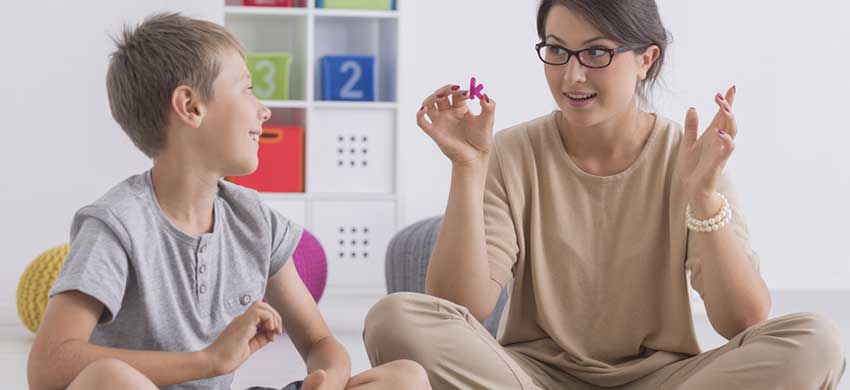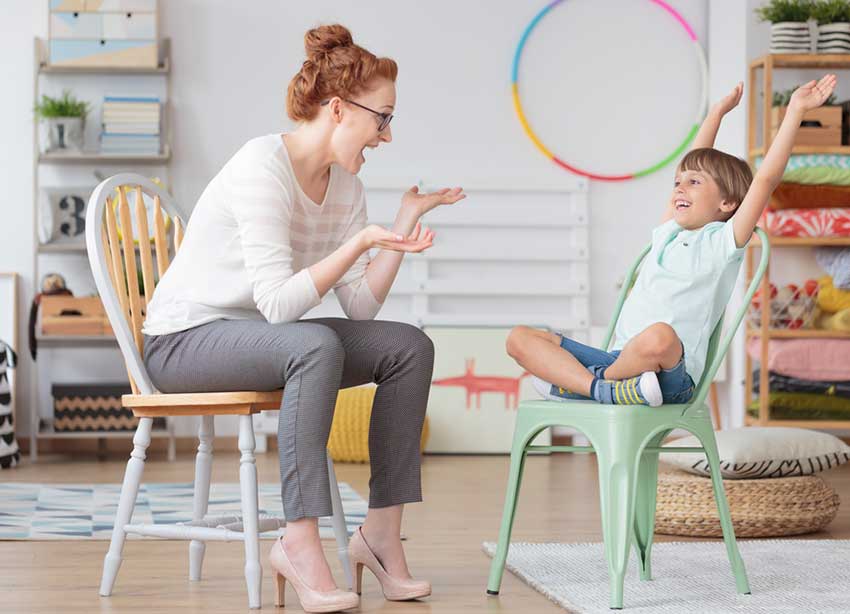
Austin boasts a number of wonderful schools or school-like center-based therapy groups and other autism organizations like the
Central Texas Autism Center,
Action Behavior Centers,
The Autism Trust USA and the
Autism Society of Texas to support children with autism in developing their skills and abilities in an educational environment.
For a parent of a child with autism, sending your child to the right school is important, but in itself, is not enough. Children with autism will continue to make their world smaller and smaller when left to their own devices. They would wear the same clothes every day, eat the same foods every day, watch the same programs on TV, or play the same games on their tablet.
Jeanne Beard, founder of the National Autism Academy, shares a few tips on how to help children with autism get a good start into the new school year and how to keep them going.

Help Children with Autism Deal with Change
Working at home with your child to continue to keep them on their green-growing edge is necessary for creating real progress in the functionality and independence that we all dream of for our children. This is no more apparent than at the beginning of the school year when everything is brand new. Change is difficult for children with autism, and the new school year comes loaded with new experiences, new peers, new teachers, new books and new classrooms.
At home we can mitigate some of the difficulty with the new school year by creating a consistent morning and evening routine. Be sure that when you plan your routine, you will be able to stick with it; changing after a few days or a few weeks will be a setback. Expect some frustration, anger, and pushback at first from your child, but if you stay consistent, the routine will serve you for the rest of the school year by supporting the completion of tasks the child would prefer not to do – like homework and hygiene.
Create a routine and share the schedule with your child
Some kids benefit from seeing the full schedule in a graphic presentation, while others may feel overwhelmed by seeing too much. Determine what is a comfortable amount of data for your child to manage at one time without creating anxiety, and display the schedule accordingly. Be sure to include some neurological regulation activity for your child with autism. Experts suggest that it is ideal to do at least 30 minutes of regulating activity in the morning to prepare for school and 30 minutes or more after school to help the child decompress and process their day.

Hold your child's world together
It is not unusual for a child with autism to have a full-blown meltdown the moment they cross the threshold of home after a day at school. This does not necessarily indicate that the school is not supporting your child effectively. More often it means that your child has been using all their energy to hold it together during the school day, and they hit the wall when they reach the comfort and safety of home. Don’t take it personally, Mom is usually the “lynch pin and lightening rod,” holding the child’s world together, while attracting the worst of the behavior like a lightning rod.
Establish strong communication with your child's school
Finally, creating strong and consistent communication with the school will maximize the benefits to your child. Have a notebook that stays with the child to simplify and encourage communication between you and the teacher(s). Using consistent phrases and words for concepts, sharing strategies that are working at home or at school, informing teachers of current motivators (e.g. if, at home, you promise a special treat as a motivator for completion of a project) so they can support the effort, share issues that arise, etc. When all environments are on the same page, the child receives the maximum educational, emotional and functional benefits.
ABOUT JEANNE BEARD:
Jeanne Beard, founder of the National Autism Academy and author of “
Autism & The Rest Of Us”, has decades of experience in the trenches with Asperger’s Syndrome and Autism Spectrum Disorders, and the people diagnosed with them. In addition to her essential life experience creating functional, nurturing, and balanced relationships with those on the spectrum, Jeanne was mentored by clinical expert Timothy Wahlberg, PhD during the writing of his clinical guide “Finding the Gray: Understanding and Thriving in the Black and White World of Autism and Asperger’s.” Through her incredible insight into the thoughts, experiences, and challenges of those on the spectrum AND of the rest of us, Jeanne builds a bridge to hope and a better future for us all.
For more information, support, and parent training, visit:
www.nationalautismacademy.com.